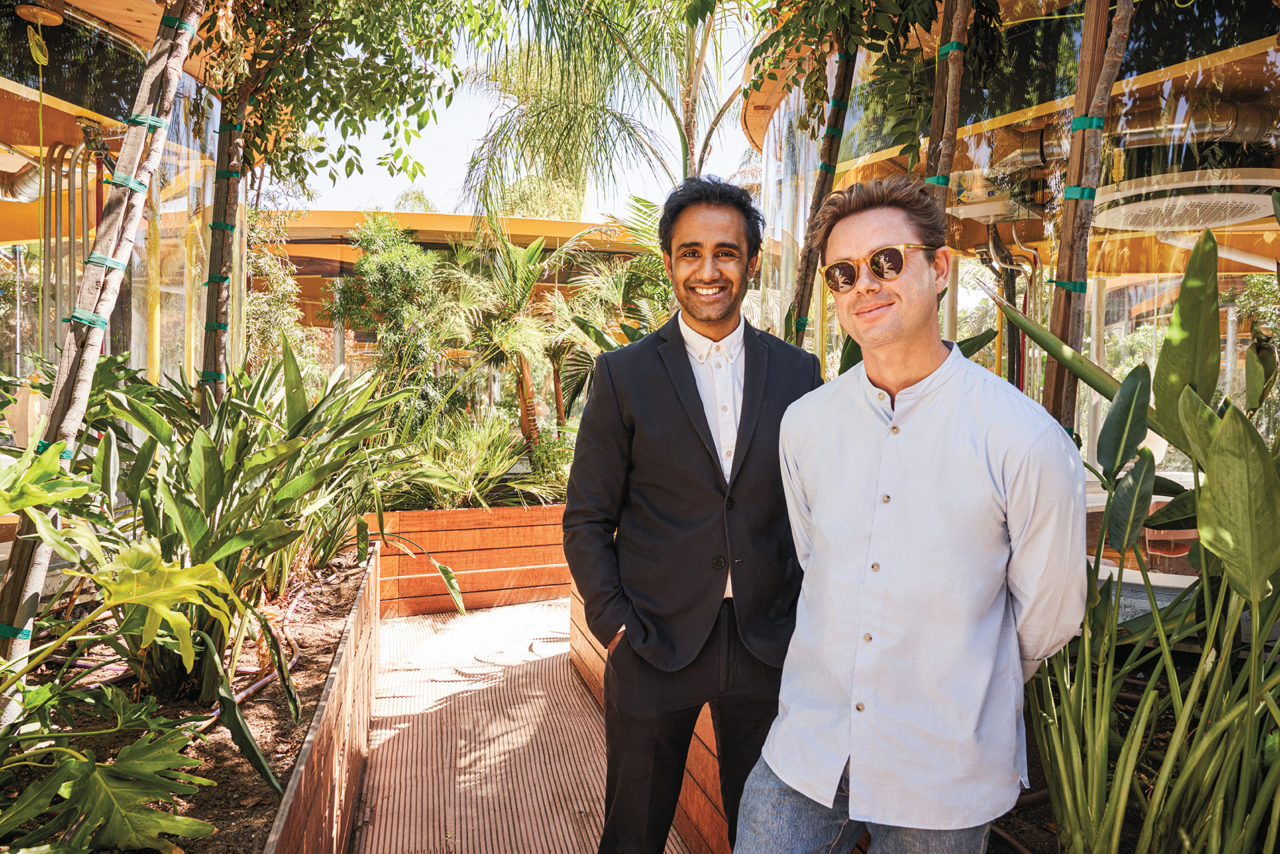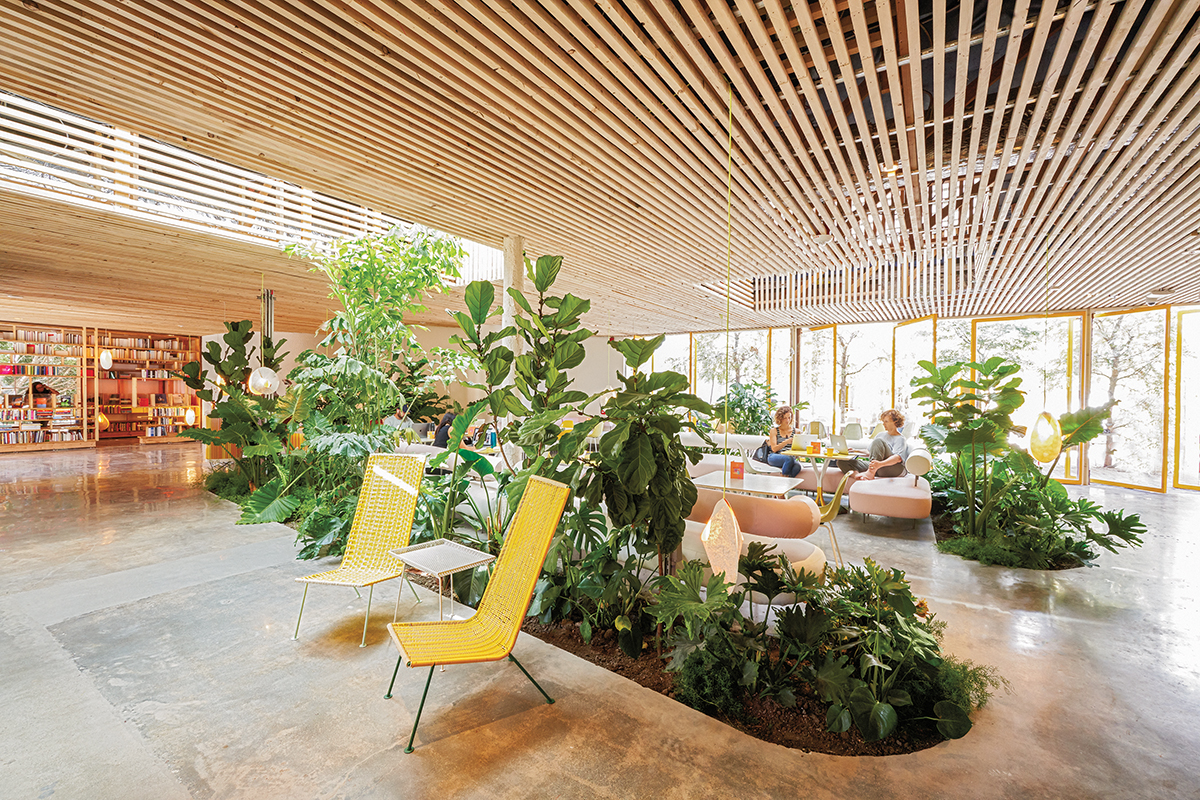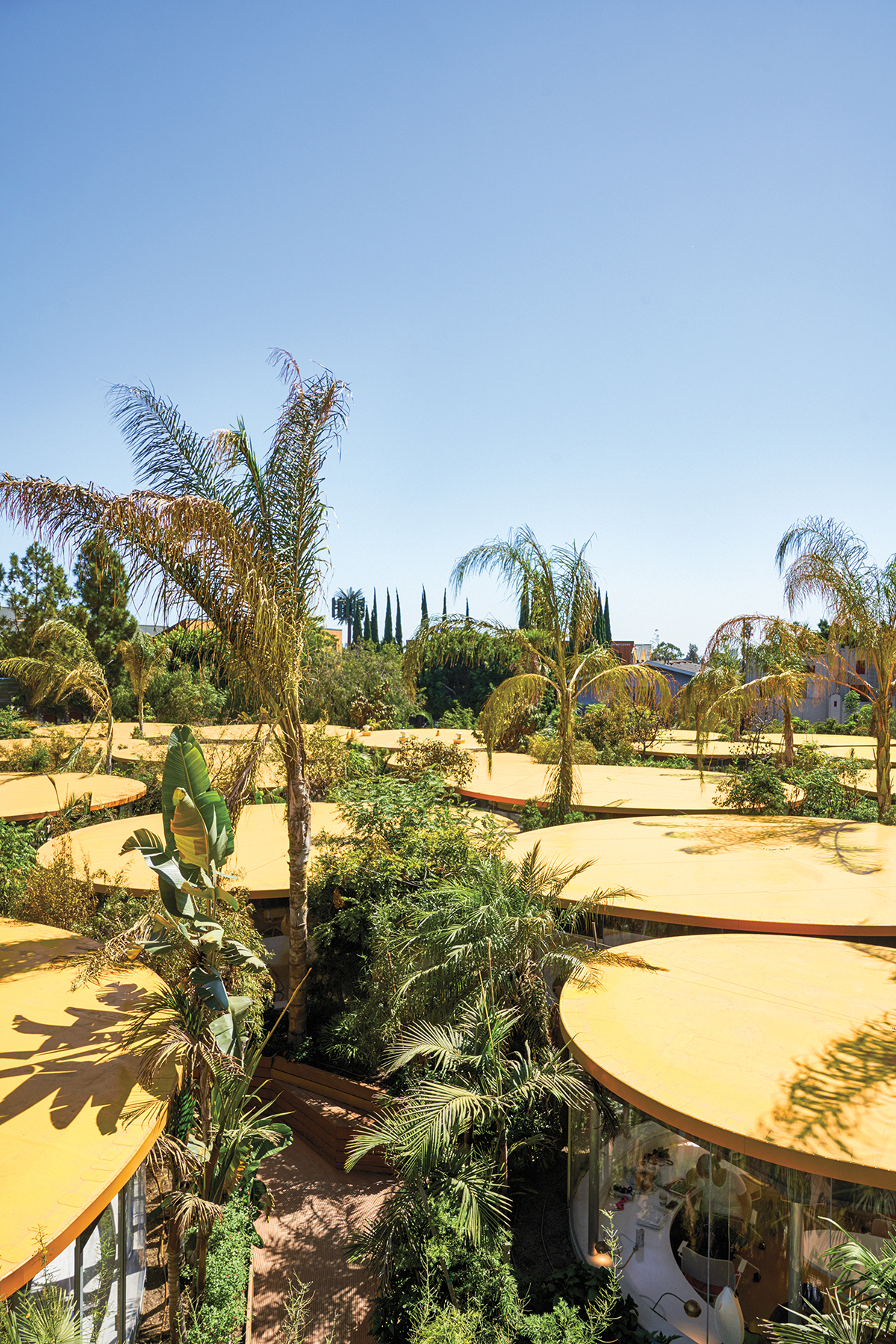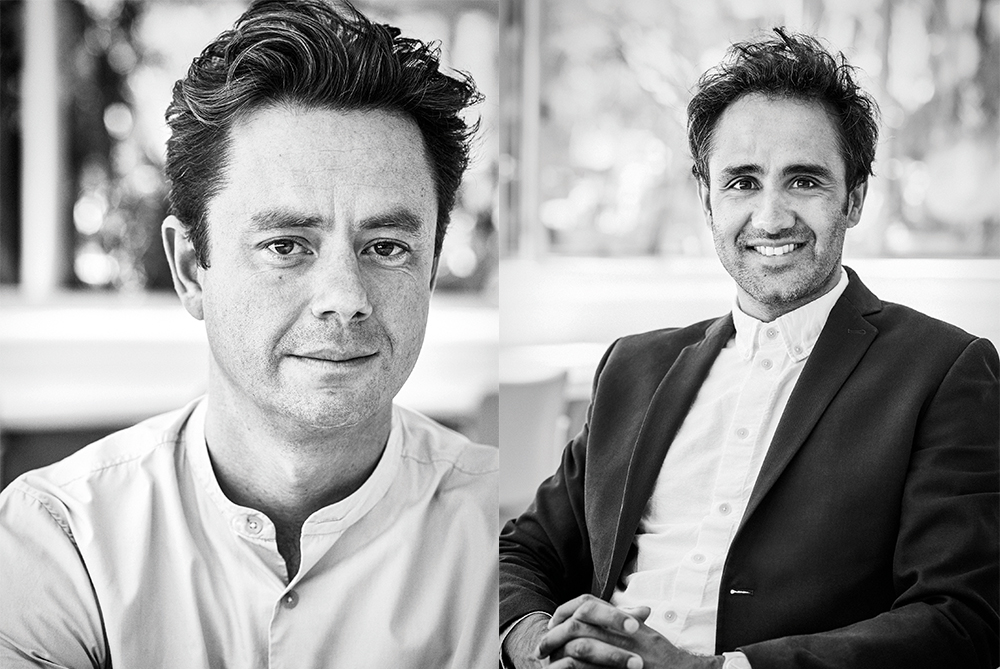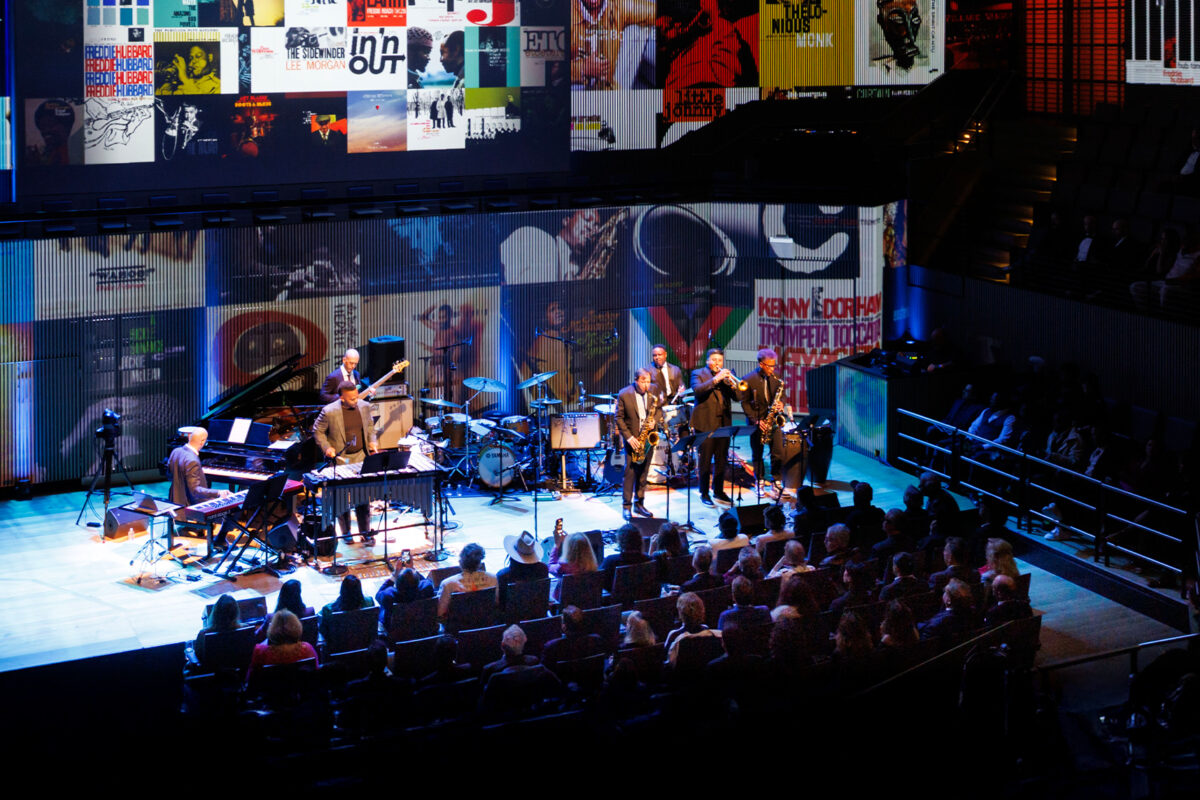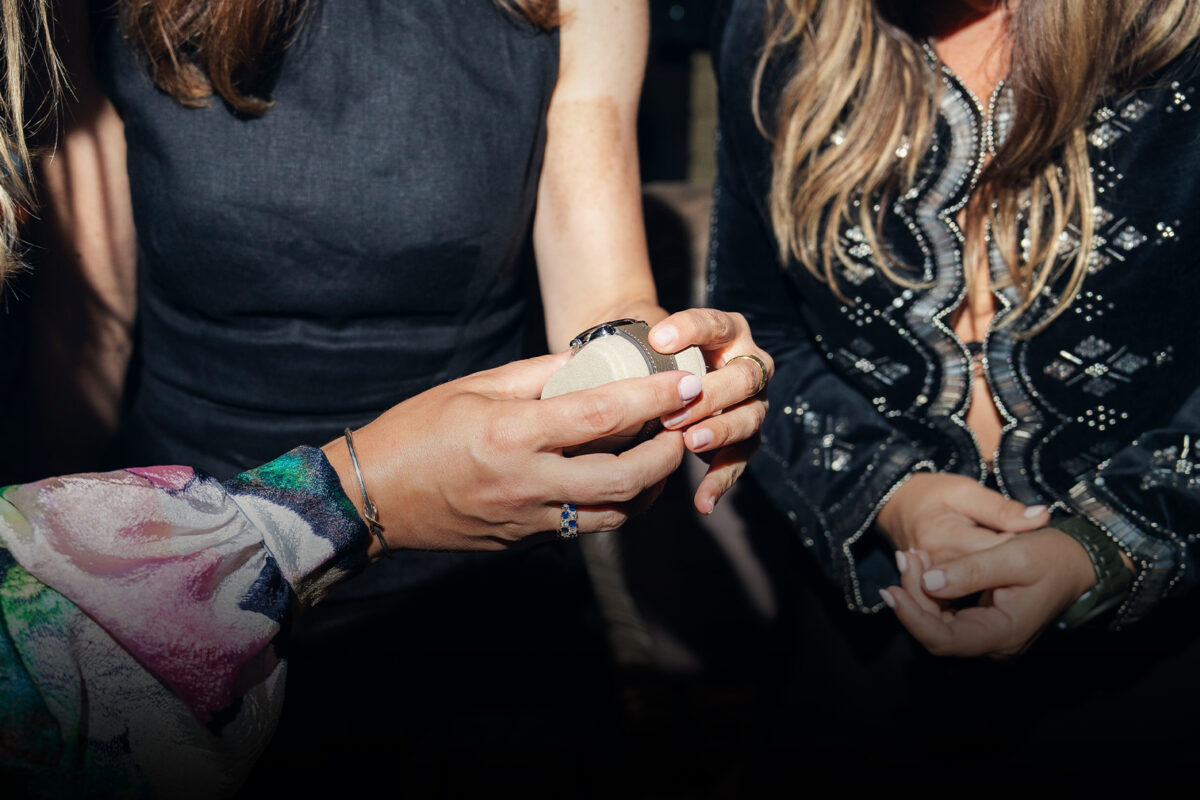Introducing its highly curated list of tech companies and nonprofits, world-class cultural program and mi casa es su casa ethos
Words by DEGEN PENER
Photography by RAINER HOSCH
In a corner of Hollywood near the 101 Freeway is a new members club, but its founders, Rohan Silva and Sam Aldenton, say it’s nothing like Soho House. Granted, you still need to apply, but Second Home is all about embracing openness.
With five locations across London and Lisbon, their new spot is also a co-working space, but they really don’t like it being compared to WeWork, either. From a design perspective, the socially responsible company that they founded in London in 2014 hardly feels like an office. Indeed, their first in the United States — despite being a block away from a Home Depot and an under-construction Target — is something quite remarkable in its own right.
Already home to Snapchat’s Snap Foundation, author Dave Eggers’ creative writing charity 826LA, the L.A. chapter of the Sunrise Movement (the group behind the Green New Deal), and companies doing everything from architecture and advertising to music and film production, Second Home Hollywood is enormous, covering 2 acres with more than 6,000 plants and trees. Designed by the Spanish architecture firm SelgasCano, it’s a thrillingly imaginative adaptive reuse of a midcentury building by late Los Angeles architect to the stars Paul R. Williams (who designed houses for Frank Sinatra, Eva Gabor, Tyrone Power, and Desi Arnaz and Lucille Ball).
“This building was just totally derelict when we found it,” says Silva, 39, of the main structure, built in 1964 as a community building for the nonprofit Assistance League of Southern California, co-founded by socialite Anne Banning, whose family first developed Catalina Island. He adds, “The site has a really special L.A. history. Paul Williams was the first African-American to be admitted to the American Institute of Architects. He had to overcome incredible challenges. He had to learn to draw upside down, because he felt that white clients wouldn’t let him sit next to them and do sketches, so he had to sit opposite and draw. And he wasn’t even allowed to visit some of the homes and buildings that he was designing and built.”
The site’s original two-story, Colonial Revival-style building, which boasts one of Williams’ signature sweeping staircases, has now been reimagined as the heart of the creative offices. The architects — who have designed all of the Second Home spaces and who first became involved through a family connection (Aldenton’s wife is the niece of the founders) — have added bright stripes and swaths of color throughout. Reds, oranges and yellows pop up in carpets, chairs and moldings, giving the offices a bold, energetic feel. The campus includes an event space, bookshop, podcast and photo studio, a coffee bar and a soon-to-open public restaurant, Andrews Place, overseen by chef Phuong Tran of West Hollywood’s Croft Alley. “We’ll have a liquor license covering the whole campus,” says Aldenton, 36, “so we’ll be doing fun things things like drink trolleys on a Thursday evening.”
The pair stress that anyone, not just members, is invited to come eat at the restaurant, grab a coffee or attend one of the free events that are a part of Second Home’s cultural program. Recently, they’ve had Queer Eye’s Antoni Porowski and Stephen Dubner, the co-author of Freakonomics, in to give talks. They have also hosted lectures by director David Lynch and architect Thomas Heatherwick at a SelgasCano-designed pop-up installation, the Serpentine Pavilion, at the La Brea Tar Pits, which is open through Nov. 24. And all local community groups and nonprofits are welcome to book space in meeting rooms free of charge.
“So this building is still a community building,” Silva says. “We’re like the opposite of Soho House. No one is at the front desk to stop you [from] doing whatever you want. We don’t like all that kind of closed, ‘Screw you, you’re not good-looking enough to get in.’ We don’t care what anyone looks like.”
The look of the buildings, on the other hand, is something Silva and Aldenton do care strongly about, but it isn’t just for the sake of aesthetics. “The environment makes a big difference, because people want to work in places like this,” Silva says. “What we’ve found is that it helps companies located at Second Home recruit better. It’s really hard as a small business to persuade someone good to work for you because you can’t pay as much as Google can.”
Complementing the main building is what the pair call an urban forest. Located in a former parking lot, the garden area is comprised of 60 discrete buildings in biomorphic shapes topped with yellow roofs and has the feel of a retro-futuristic encampment of pods on another planet. Every building — each housing a separate company — is sunk partway into the soil of the planting beds, which makes them cooler, minimizing the need for air-conditioning. The lush plantings, including birds-of-paradise and king palm trees, are inspired by the city around it. “We see L.A. as this like verdant, luscious garden,” Aldenton says. Silva chimes in, contending most co-working spaces are “soulless, crappy cubicles with, like, a mustache drawn on the wall and some inspirational quotes. They all look the same. And small teams doing hard things deserve better than that.”
Tiago Pereira, creative director of social impact company Enso — which recently moved from its own offices in Santa Monica to Second Home — says, “We were trying to find a way to be more connected to other communities and other areas of business beyond us. We think they are a very optimistic, multidisciplinary and alive vision of the future. We think it serves us better being close to people pursing all sorts of dreams and wanted to be a part of it.”
Silva and Aldenton also see themselves as business incubators. When it’s completely leased, Second Home will include 250 companies occupying private offices (pricing from $2,800 per month for a four-desk office) and about 400 roaming members (from $400 per month) with access to communal work spaces. They put considerable thought into curating the right mix of companies, making sure no single industry ever rises above 10 percent of the membership, and they facilitate connections between members via their concierges, aka “breakthrough managers.”
“The idea at the heart of Second Home is about diversity and serendipity. In this building, you’ve got tech companies next to designers next to music companies next to fashion. So we’ve tried really hard to make sure that as many different industries are here, and about 25 percent of our community are charities and social impact organization,” says Silva, whose desire is that all of these people meet and in some ways work together. “There are organizations like PR firms, law firms, recruiters and investors, the kind of people you need around you as you’re growing your thing. It takes a village, right? We genuinely think diversity makes creativity stronger.” And when a company is so successful that it moves out to its own offices elsewhere, Second Home throws a celebration party for them. “We’re rooting for that. It’s a sign of success for us,” Silva says.
“This is a city where you’re enabled to dream. People want you to succeed”
Rohan Silva
The two business partners first met in London eight years ago. Aldenton — who has two children (and one on the way) with his wife, Isabel Parada Cano-Lasso, an art dealer — started his career as a gardener, then started working for a social enterprise company. “They owned a multitenanted building in East London. So I learned to create a sense of community in this building. We ended up having Yoko Ono playing at the music venue there, and we had Brad Pitt and Angelina Jolie have a birthday party on the roof garden I made. I was doing this sort of thing on a micro scale.” Prior to Second Home, Silva — who has a baby with wife Kate MacTiernan, a trained architect and the co-founder of an arts festival — worked as a senior policy advisor to British Prime Minister David Cameron. He was involved with such issues as international development, the environment and innovation policy. One of his signature accomplishments was shepherding the development of Tech City, a cluster of technology companies in East London. Aldenton and Silva met in 2011 through a mutual friend, and after coming up with the idea for Second Home, the pair raised about $5 million in investments in three weeks and opened their first location in a former carpet factory in East London’s Brick Lane.
Second Home — which has also funded the construction of a school in Nairobi, Kenya, designed by SelgasCano — quickly gained a reputation as a place where new companies thrive. “The biggest green energy company in the U.K. is a company called Bulb, and it started at Second Home,” says Silva, who adds that teams based at its London location created jobs 10 times faster than the national average.
Aldenton and Silva say Los Angeles was an easy choice for their first stateside location. “I mean, the obvious leap is across the pond to New York, but for us, New York is sort of a version of London. And we had the feeling that L.A. is where the cultural energy is emanating from now. Just to be frank, L.A. is cooler than New York, right now,” Silva says. Aldenton adds, “This is a city where I think you’re enabled to dream. People are excited at your slightly wacky, kooky idea and want to see you succeed.” In fact, the pair like L.A. so much that they, along with their families, have moved to the city full time, with Aldenton in Los Feliz and Silva in Silver Lake. “We’ve really fallen for this place,” Silva says. “Everyone in the city has been so open and welcoming and friendly.” Among their favorite spots around the neighborhood near Second Home are the Egyptian Theatre (where they recently saw Chinatown); the Upright Citizens Brigade comedy club; Jitlada Thai restaurant; Musso & Frank Grill (“for old-school Hollywood food,” Aldenton says); and The Trails cafe in Griffith Park.
Already, the pair are looking around for a location for a second Second Home in L.A. — but they aren’t in a rush. Silva says, “Actually building a community, not just saying you’re building one, takes a really long time.”
Feature image: One of the pod-like private-studio office spaces in the gardens of Second Home, featuring sconces by ALEJANDRO CANO, custom office chairs by HOWE and a SELGASCANO-designed center table manufactured by THE KORTE COMPANY.
This story originally appeared in the Fall/Winter 2019 Men’s Edition of C Magazine.
Discover more CULTURE news.

